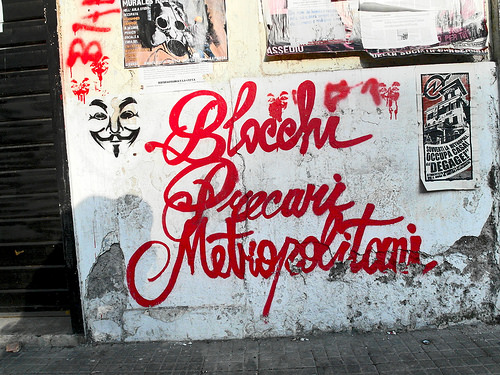Everyone in Italy says, “We can live on our culture and art”. It has become an old refrain, even if it is true; but, as everyone in Italy knows, it is not possible to live on our culture and art. Of course, everyone in Italy is proud of Italian cities and art, proud of its archaeological sites and museums, proud of our food and cuisine, of our literature. But, it is difficult to prevent mafia and corruption, which have widespread in the cultural activities and ruins the efforts to maintain a high standard efficiency in this field. This is only one side of the problem; the other is the disastrous policies carried out by the last governments which have spoiled the Italian cultural system. To this we can also add the loss of interest in culture and art, the lack of funds for new creative performances, and a general listlessness in promoting culture and creativity.
Despite this poor scenario for culture, there are places in Italy where it is still possible to produce and encourage creativity and art. Broadly speaking, there are two types of cultural centres: clubs and galleries opened following the law, and squats and other kinds of centres managed outside the law. The first type is rather common and is usually financed with private funds (rarely with the help of municipalities’ funds) and managed by the staff or affiliated to A.R.C.I., a popular national association which promotes aggregation and anti-fascism, fostering cultural activities and youngsters’ propositions.
Squats, on the other hand, are illegally occupied by a group, an organization or an association, who decides to open a common space for discussions, exhibitions and gigs, completely free from impositions and self-managed. However, frequently this kind of centres are disliked by the Italian public opinion that consider squats as a den of drug addicts or a haunt of revolutionaries. What public opinion easily forget is that young students and non-students who set up a squat only want to express themselves and their creativity outside conventionality and sometimes outside the rules. Usually they are accused of occupying illegally a place owned by the municipality, however, in every case of occupation I have seen, these places were abandoned, decayed and unused for years. Furthermore, there are little opportunities for young artist to be known if they do not have money or some contacts with the establishment. So why not helping people who want to create something for the community, who work in an occupied place to restore it and usually organise events that you cannot find in ‘official’ spaces. In squats, or “centri sociali”, as they are called in Italy, new artists (musicians, painters, writers…) find a place to express their creativity, debates and discussions on the world issues are held frequently and everyone is welcomed heartily. Moreover, in many cases they have helped homeless people or migrants in the last months. Some of the long established and well-known squats in Italy have finally gained an official status and signed an agreement with the municipality, at least to be free to manage in peace their place.
Unfortunately, these interesting and lively centres are boycotted by authorities and police officers increasing their bad reputation. Instead of a policy of integration and promotion of different cultural activities and events, in Italy authorities prefer, and they have always preferred, some good speeches and nothing else, repressing the will to create something. However, the creative movements and the free associations have always resisted and always been present.

